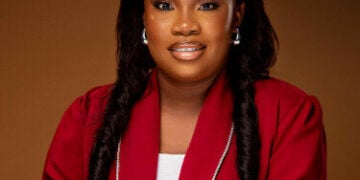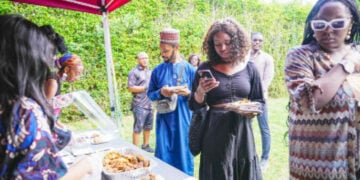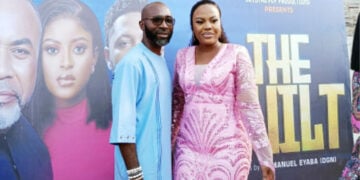At the 2024 Life In My City Arts Festival (LIMCAF) Abuja Regional Exhibition, a few artworks standout highlighting the state of Nigeria’s humanism, whilst challenging our nation’s disposition to its different-abled population.
Themed Humanism, LIMCAF 2024, required artistes to look deep into their communities of residence and visually depict what makes man truly human – be it by way of his relationship to his fellow men, to his environment or both.
As is often the case with most themed exhibitions – a number of the artworks has zero connection to the theme either visually or how they were made. Rather it is rife with visual misses, blatant and superficial takes on the concept. There are also some well-made works that has viewers scratching their heads in a bid to connect to the theme.
However, a few of the art pieces via allegorical and ironic approaches provide deep thought and insights to the Humanism – particularly on the state of Nigeria or Nigerians humanism, and in particular the nation’s attitude to its different-abled population.
A prime example of the state on our national humanity is Olanikan Olaolu’s Spheres of Human Influence which speaks of the direct and indirect sources of humanism in people. It shows parents as direct sources of influence that shapes a person’s life. Next to parents, are secondary sources of influence like education and religious institutions, the law, time, and individuals’ relation to objects to money or wealth.
Encapsulating Nigeria’s humanism are Moses Sodipo’s A Cry For Help, which depicts the brutalization of peaceful protesters by the authorities. A personal favourite of mine is Nifemi Dada’s Salvation. The artwork references the book of Exodus story of Moses creation and lifting of a bronze serpent on a stick which the Israelites look upon to survive the assault of smaller snakes. But in the painting while all sorts of crime, corruption and misdemeanor plague the city of Lagos, the few saints found, find no saviour in the bespectacled, rich obsessed Imam.
A recurring subject in the exhibition are different-abled people. With titled works like Asha Adedayo Samuel’s Body Limitation, Nelson Wilfred’s Bege Na (My Hope) both draw attention to the subjects’ productiveness in spite of their physical limitations; thereby delineating Nigeria’s attitude and perspective of persons living with disabilities.
A day hardly goes by in Abuja where one won’t see the physically challenged sweeping bridges in various parts of the city. A friend and I once pondered what heaps of dirt our bridges would have been without these people who keep them clean in exchange for alms, and on occasion without soliciting for alms. What stops federal authorities from officially engaging them in the city’s sanitation and environmental board for a job they have proven capable of doing?
While there are other positive qualities of shared humanism referenced in the exhibition, like communalism, heritage transference, diligence and invisible but unifying bonds, the current state of our society signifies that the negatives are much more memorable and outweigh the positives.
But there is hope too – visualized in Dada’s Sacrifice which indicates that from one, blessed, open hands, can overflow good things to the have-nots, and through acts of kindness and love embodied in Hudan Ogole’s armour-suited, paper-collage art of deceased philanthropist, Michael Jackson, we can Heal The World.




